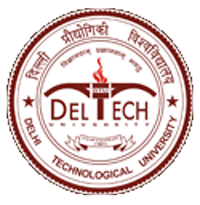Please use this identifier to cite or link to this item:
http://dspace.dtu.ac.in:8080/jspui/handle/repository/21434| Title: | DEVELOPMENT OF AN APPROACH FOR WATER QUALITY MANAGEMENT IN URBAN RIVER REACHES |
| Authors: | VERMA, NIBEDITA |
| Keywords: | WATER QUALITY MANAGEMENT URBAN RIVER REACHES BIOCHEMICAL OXYGEN DEMAND (BOD) TMDL |
| Issue Date: | Oct-2024 |
| Series/Report no.: | TD-7740; |
| Abstract: | The Delhi reach of the River Yamuna stretch is a receptacle of urban liquid waste caused by human interference from domestic and industrial fields and leads to one of the most contaminant reaches of the country. This reach needs a water quality management strategy to directly improve the dissolved oxygen (DO) concentration and decrease the concentration of various undesirable substances, including the biochemical oxygen demand (BOD). This novel study appraised the water quality, assimilation capacity, total maximum daily load, and proposed management strategies by generating scenarios with a receiving water quality model. Multivariate techniques were used to represent the spatiotemporal water quality variations and interpreted a large hourly complex dataset (March 2021-February 2022) obtained from two real time monitoring stations upstream and downstream of this reach. The increased concentrations of conductivity, BOD COD, TOC, NH4, and low DO downstream indicated the influence of outfalling drains and diffused sources contributing pollutants into the river stretch. A higher BOD, COD, and TOC concentration was observed downstream in the rainy season, attributed to the organic substance in surface runoff. FA and PCA were implemented in the standardized data set to reveal the correlation between the water parameters. For upstream, factor 1 was strongly positively loaded turbidity, TOC, COD, and TSS for all the seasons except monsoon. For downstream, TOC and COD contributed strongly positive load except in winter. The wastewater treatment plants data for 2020-2022 have been analyzed, and the removal efficiencies of BOD and COD were found between 65%-94%. The BIOFORE technology has shown maximum removal efficiencies, around 94% and 89% for BOD and COD, respectively. The QUAL2kw model was used to predict river quality. The model was calibrated and confirmed in critical flow conditions of pre-monsoon periods. A sharp declination of dissolved oxygen and acceleration of BOD was observed after the outfall of drain1(Najafgarh Drain). In order to evaluate assimilation capacity, four cases with 41 scenarios were studied with varying upstream flow augmentation and BOD load. It has been observed that with 80 cumecs of upstream flow, the reach can assimilate around 30 TPD of BOD and 142 TPD of COD load, maintaining the desired level of DO (≥ 4mg/l) and BOD (≤3 mg/l) throughout the reach. For the Total Maximum Daily Load (TMDL) implementation plan, three scenarios with 10 simulations have been constructed with varying BOD load, upstream flow, and local oxygenation. With 10cumecs upstream flow, the required TMDL was around 7.5 TPD of BOD load to maintain the BOD concentration below 3 mg/l throughout the spread. With the 40 cumecs increment of upstream flow, the TMDL of BOD was found around 14.5 TPD, and DO concentration was more than 2mg/l throughout the reach. Two plans were proposed for water quality management of this polluted reach. In the first plan, 23 scenarios were constructed with varying pollutant load modification and increasing upstream flow. Results indicate that headwater flow management and load modification increase the river water quality. Meanwhile, around 12 km downstream, DO concentration could not reach the desired standard. External oxygenation may be required to achieve the necessary standard of DO. The second plan evaluated the weir function at the critical points to entrap the oxygen and increase the level of DO concentration. It was observed that two weirs, 0.8 and 0.9 m in height after 0.44 km and 10 km downstream, can improve the assimilation capacity of the reach due to flow over weirs producing intense oxygenation through air entrainment. |
| URI: | http://dspace.dtu.ac.in:8080/jspui/handle/repository/21434 |
| Appears in Collections: | Ph.D. Environmental Engineering |
Files in This Item:
| File | Description | Size | Format | |
|---|---|---|---|---|
| Nibedita Verma Ph.D..pdf | 5.48 MB | Adobe PDF | View/Open |
Items in DSpace are protected by copyright, with all rights reserved, unless otherwise indicated.



